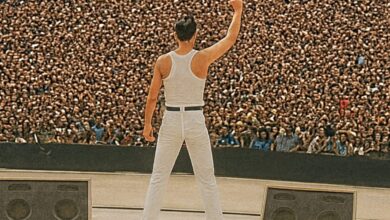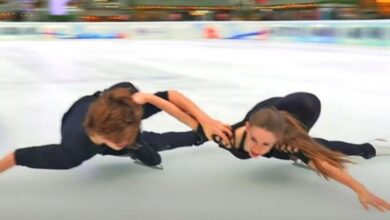Corvyx Reimagines a Classic: “The Sound of Silence” as a Cinematic Dark Masterpiece
Corvyx’s “The Sound of Silence (Cinematic Dark Version)” doesn’t approach the classic as a museum relic; it treats the song like living material ready to be reimagined. From the first breath, the performance unfolds with deliberate poise, inviting the listener into a slow-blooming world of shadow and light. Rather than leaning on shock value or over-singing, it relies on atmosphere, pacing, and emotional clarity. The result is a rendition that honors the original’s quiet gravity while expanding it into something grand, intimate, and strikingly present.
The arrangement sets its intentions early. Low, tactile frequencies rise like fog along the floor, while high strings hover at the edges of the stereo field. A hushed piano threads through the space between them, sketching harmony with a minimalist hand. Nothing is rushed. The pulse is measured, almost meditative, so the lyric can sit with weight and meaning. Instead of sprinting toward a predictable climax, the track builds in careful tiers, reserving its most forceful moments for when they will truly land.
Vocally, Corvyx chooses intimacy before intensity. You hear close mic work and rounded consonants, the kind of detail that pulls the listener nearer rather than pushing them back. As the song unfolds, his delivery widens from near-whisper to full, sustained lines that glide over the orchestration. Power appears as consequence, not spectacle. Even the highest phrases feel earned because they arrive after restraint, much like a scene that holds tension before revealing its emotional center in a single, decisive gesture.
Dynamics shape the narrative more than any single hook. The mix preserves genuine headroom so the quietest passages register as truly soft, and the peaks arrive with cinematic impact. Percussion doesn’t crack so much as rumble in the distance, like weather rolling across empty streets. When those drums finally step forward, the lift is physical. Strings begin as texture, then gather into a second voice that counters and complements the lead, creating dialogue rather than decoration. The ear senses a story arc even before the mind names it.
The lyric receives the same care. “Hello darkness, my old friend” is delivered less as meme and more as thesis—an opening statement that frames everything that follows. Images of silence, streets, and neon gods are allowed to breathe between phrases; air becomes part of the meaning. Strategic pauses act like punctuation you can feel. By resisting the temptation to crowd the lines, the performance restores the song’s literary quality, turning familiar words into scenes you can almost reach out and touch.
Context matters with a standard as recorded so many times. Some celebrated modern versions punch forward with granite-weight baritone, while others chase cathedral-scale drama. Corvyx charts a slightly different path: still dark, still wide-screen, yet more flexible in color and contour. The emphasis falls on gradations—how a phrase can pivot from fragile to formidable within a breath, how a harmony can open the frame without overwhelming the principal line. That balance keeps the cover from feeling like a stunt and positions it as a credible interpretation in its own right.
The production grammar earns the “cinematic” tag without sacrificing intimacy. Long-tail reverbs sketch a believable room rather than a generic cavern; timed delays pulse with the tempo like breath, not machinery. Subtle low-register synths form a floor you feel before you identify, and gentle saturation glues the midrange so the vocal can sit forward without sounding hyped. It’s the kind of engineering that disappears into the experience—transparent enough to serve the emotion, meticulous enough to reward careful listening on good headphones.
Audience response tends to follow the same arc: surprise, immersion, discussion. Surprise, at how moody and measured the first verse feels. Immersion, as the strings, drums, and harmonies draw the ear into a larger space. Discussion, once the last note fades and listeners begin comparing this approach with others they know. Comment threads shift from quick compliments to thoughtful analysis—people parse arrangement choices, favorite lines, and emotional cues. That kind of engagement is a useful metric; it signals that the cover invites repeat visits rather than one-time novelty clicks.
Understanding the artist’s broader lane helps explain why this rendition feels coherent. Corvyx has long worked at the intersection of dark-pop and orchestral drama, a space where high-clarity vocals ride moody soundscapes. In that context, “The Sound of Silence” isn’t a detour so much as a bull’s-eye. The palette—subtle electronics, chamber textures, carefully staged climaxes—fits the song’s architecture. It reads less like “classic repainted black” and more like “classic revealed under different light,” a distinction that matters for longevity.
Visual language reinforces the sonic choices. Before you press play, the thumbnail’s color grading, framing, and typeface telegraph tone. Inside the video, the camera resists frantic cutting in favor of held shots that let the performance breathe. Shadows contour the face; highlights trace movement; negative space becomes part of the storytelling. By refusing visual overkill, the direction mirrors the audio’s restraint, letting the singer’s delivery and the score’s slow ascent carry the frame without distraction or gimmick.
Technically, the mix reads like a modern hybrid case study. Orchestral stems and electronic design share space without smearing into mud. The low end is carved to leave speech intelligibility intact during the most intimate passages; multiband compression reins in swells without ironing them flat. Transients keep their snap so percussive entrances feel like events rather than background noise. Pan placement is deliberate—strings feather left, pads haunt the right margin, lead vocal sits forward and centered like a lighthouse beam cutting through mist.
On the cultural side, the song choice remains canny. “The Sound of Silence” is a piece of shared memory—instantly recognizable across generations and elastic enough to absorb new anxieties. A cinematic dark reading speaks to our current appetite for serious pop: big feeling, big space, minimal irony. The cover taps that mood without pandering. It offers refined escapism, the kind that stares into quiet discomfort yet refuses nihilism, carrying a small flame through the dark and inviting the listener to walk beside it for a few minutes.
Silence itself becomes a featured instrument. The rests between phrases aren’t empty; they carry friction and meaning. In a content economy that prizes constant stimulation, letting thoughts settle for a beat feels almost radical. You can hear listeners adjusting their breathing to the song’s cadence, a bodily confirmation that the piece is working on more than a cerebral level. By shaping tension with negative space, the arrangement turns stillness into spectacle and memory into momentum.
Longevity will be the deciding measure. Flash-viral covers spike then evaporate; repertoire additions stick. Early signs favor the latter: playlist stays, reaction essays, and high repeat-play counts suggest people return not only for catharsis but for craft. Over time, that is how a cover enters the mental rotation alongside definitive versions—by earning a place listeners consider when they think of the song, not just a late-night curiosity they clicked once and forgot by morning.
Zooming out, the broader narrative reads “heritage meets hypermodern.” A mid-1960s folk statement is reframed as a 21st-century chamber-cinematic ballad without shedding the moral clarity that made it endure. The transformation here isn’t cosmetic; it’s structural—new beams on an old foundation. That is how classics keep breathing: not by freezing in amber, but by proving they can inhabit new rooms and still sound like themselves. Corvyx’s rendition achieves exactly that, leaving the listener quieter—and somehow larger—than it found them.
::contentReference[oaicite:0]{index=0}




